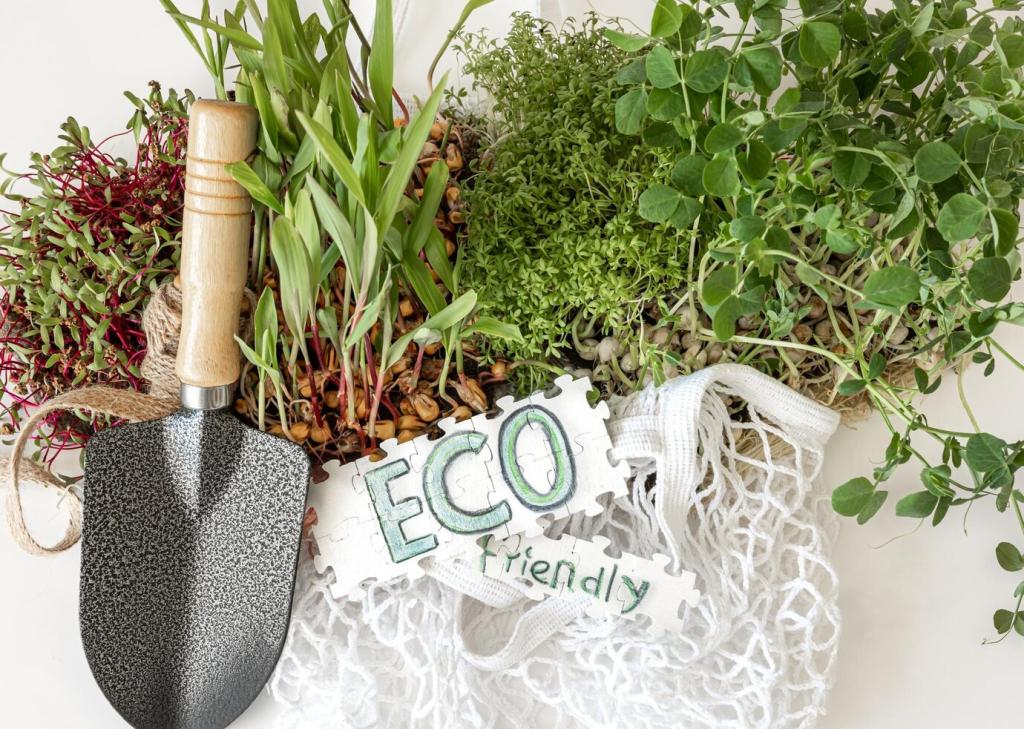Selected theme: Green Marketing: Tips for Authentic Communication. Welcome to a space where honest sustainability stories beat buzzwords. Learn how to speak clearly, prove your claims, and build trust that lasts. If this resonates, subscribe and join the conversation.
Start With Real Impact, Not Slogans

Quantify baseline footprint: energy, water, waste, and emissions across scopes 1, 2, and 3. Authentic marketing starts with boring spreadsheets, credible tools, and the humility to discover uncomfortable hotspots before writing your first tagline.

Craft Clear, Verifiable Claims
Replace soft words like eco-friendly with measurable facts such as made with 70% recycled aluminum, packaged in FSC-certified board, or repaired locally. Specifics reduce interpretation gaps and help customers compare meaningfully without decoding marketing euphemisms.
Craft Clear, Verifiable Claims
Host certificates, lifecycle snapshots, and audit letters on stable URLs or QR codes printed on packaging. Keep files readable, dated, and signed. Invite questions, and promise updates when numbers change after product iterations or supplier improvements.
Design Sustainability Into the Product
Choose materials for durability, repairability, and safe recycling, not just low upfront emissions. Design parts to be replaceable, provide spares, and publish teardown guides. The less you waste, the less you need to explain later in ads.
Design Sustainability Into the Product
If a bottle uses less plastic but slightly more transport emissions, say so and show your plan to improve. Customers respect brands that reveal constraints, prioritize impacts by scale, and sequence changes instead of claiming silver bullets.





Navigate Standards and Regulations Carefully
Track Evolving Rules
Monitor the FTC Green Guides, EU guidance on environmental claims, and local advertising standards. Align wording now to avoid rework later. Legal clarity protects consumers, reduces compliance risk, and paradoxically makes your creative team bolder within well-understood guardrails.
Use Certifications Thoughtfully
Lean on credible, third-party marks like FSC, Fairtrade, or B Corp for specific attributes, not a blanket halo. Explain what each seal covers and what it doesn’t, so customers understand scope instead of assuming universal perfection.
Respect Data Ethics and Privacy
When gathering lifecycle or usage data, disclose purposes, minimize collection, and honor regional laws like GDPR. Ethical stewardship of information is part of sustainability, and it reassures people that your responsibility extends beyond packaging claims.

Lead With People, Not Platitudes
Center real voices: a technician who redesigned a process to cut waste, a customer who repaired instead of replacing, a supplier who switched to closed-loop water. Authentic narratives create empathy that statistics alone cannot ignite.
Blend Emotion With Evidence
Pair each heartfelt vignette with a crisp chart, date-stamped metric, or audit excerpt. This balance lets skeptics verify and idealists feel. Invite readers to ask for deeper data and subscribe to follow each improvement milestone.
Make the Next Step Obvious
End stories with a clear invitation: try the repair guide, join the pilot, or comment with a tough question. Reduce friction with short links, and promise timely follow-ups when you learn something new or change course.
Measure, Learn, and Iterate
Track repair rates, return volumes, recycled content shares, energy intensity per unit, and claim comprehension in user testing. If metrics don’t inform decisions, replace them. Publish the shortlist you truly manage against, not a decorative dashboard.
